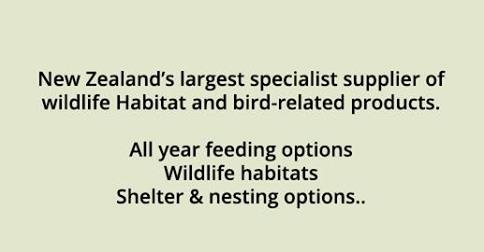Bird Baths Buying Guide
A bird bath can be an attractive addition to your garden and a welcome source of water for birds.
New Zealand Made Bird Baths Available at www.creativewoodcraft.co.nz
Birds and water - A bird bath is suitable all year-round.
- Many people put food out for birds, but fewer provide a regular supply of clean water. Birds need water for drinking and bathing. Bird baths are particularly important during the winter when natural supplies may be frozen, and in dry conditions that occur mainly during summer.
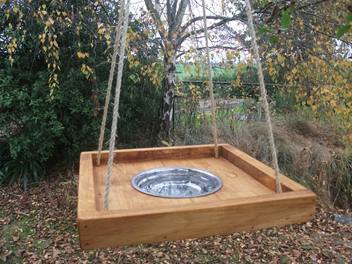
- Birds get the liquid they need from their food, and by drinking. Many insectivorous birds get most of their water from food, while seed-eating birds have a dry diet and they need to drink more. Since birds have no sweat glands, they need less water than mammals. However, they do lose water through respiration, and in their droppings.
- Water to bath in is equally important. It is essential that birds keep their feathers in good condition, and bathing is an important part of feather maintenance. Dampening the feathers loosens the dirt and makes the feathers easier to preen.
Bird baths
- There are many ways of providing water in the garden. The simplest way is a bird bath. This is essentially a dish of water, which needs to be functional – the aesthetic aspects are there to please us, not the birds.
- A good bird bath has a simple, sturdy construction, but is light enough to make it easy to clean and refill. It needs to have shallow sloping sides with a shallow approach to the water. Ideally, water depth needs to range from 2.5 cm to 10 cm (1-4 inches) to allow each species to bathe at their preferred depth.
- The surround of the bath must be rough so birds can grip it with their claws and not slip. It should be large enough to hold sufficient water to withstand a vigorous bathing session by a flock of starlings.

Siting a bird bath
- The location of your garden and the type of vegetation immediately around it will determine what birds will visit your bird bath, and in what numbers.
- Siting of the bath is very important – birds will only use it if they feel safe. Birds get excited and pre-occupied about bathing, and tend to be more vulnerable than at other times. Birds will need to have clear visibility as they bathe, nearby bushes or trees to provide cover if alarmed, and perches to use when preening.
- Ensure cats cannot use the cover to attack bathing birds. This can be done, for instance, by placing a thick layer of clippings from thorny vegetation, such as rose or pyrocantha,
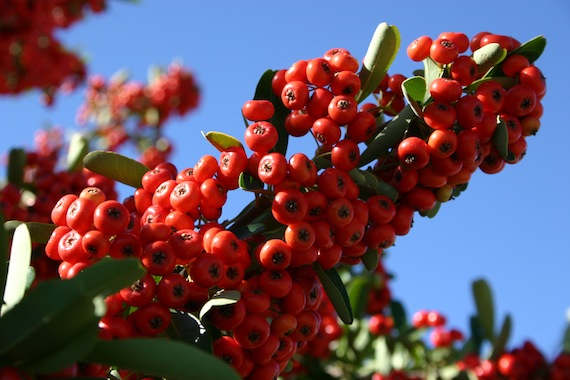 beneath the bushes.
beneath the bushes.
- Try placing the bath at different points around the garden to find the most popular site.
Keeping bird baths clean
- Being small and enclosed, bird baths can easily become dirty and stagnant, and even dangerous, without regular cleaning. Rinse out the bath daily to remove any build-up of bird droppings, algae, dead leaves and other debris, and refill with clean water.
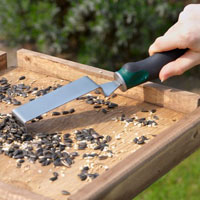
- Give the bath a thorough clean every week or so as you clean your bird feeders and tables. Scrub it well to remove algae and other dirt. You can use dilute household disinfectants or cleaners specifically formulated for bird baths, but make sure that you rinse the bath out thoroughly to remove any traces of chemicals.
- Dirty bird baths can be at least as serious sources of disease as dirty bird tables. Allowing pathogens to accumulate in the water will risk the birds’ health, and some can be transmitted to any pets and other wildlife that drink from the bird bath.
- Since there is a small but real risk of infections like salmonella being transmitted to people, always exercise good hygiene when cleaning bird baths, just as you would do with feeders. Always clean the bird bath outdoors using separate utensils, wear gloves and wash your hands when finished.
Keeping water ice-free
- In freezing conditions, birds will become more dependent on water provided in gardens, since many natural sources of water are frozen over. It can be difficult to stop a bird bath from freezing, but the following ways can help.
- A light ball, placed in the water, will be moved by even a gentle breeze and will keep just a small amount of water ice free.
- To make it easier to remove ice from a bird bath, line the bath with a polythene sheet that you can lift out.
- Alternatively, use hot water to melt the ice.
- On no account should any chemical, such as glycerine, anti-freeze or salt, be added to the water, as it could destroy the insulating
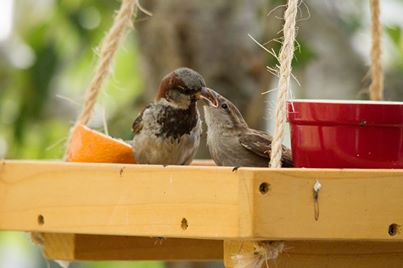 and waterproofing properties of the feathers and even prove toxic.
and waterproofing properties of the feathers and even prove toxic.
Consider buying a Quality made hand-crafted Bird Bath today! ”Removable water dish for easy of re-filling and cleaning!”

